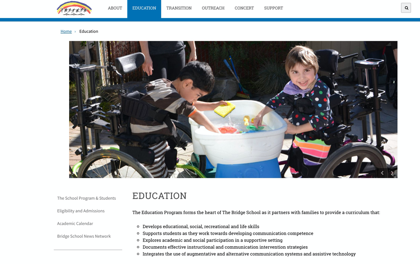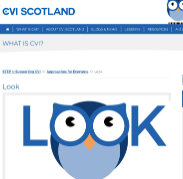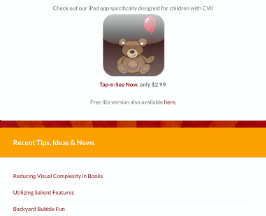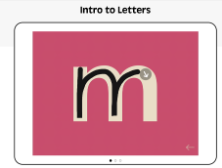Developing Language and Literacy Skills: Outcomes and Best Practices for Preschool and Elementary School Children with CVI and Complex Communication Needs
This post is adapted with permission from the authors Aileen Arai, MA, Director of Education, The Bridge School and Sarah W. Blackstone, PhD, CCC-SLP, PI, CVI/AAC Project, The Bridge School, from a presentation at the Getting in Touch with Literacy conference in Seattle, November 2019.
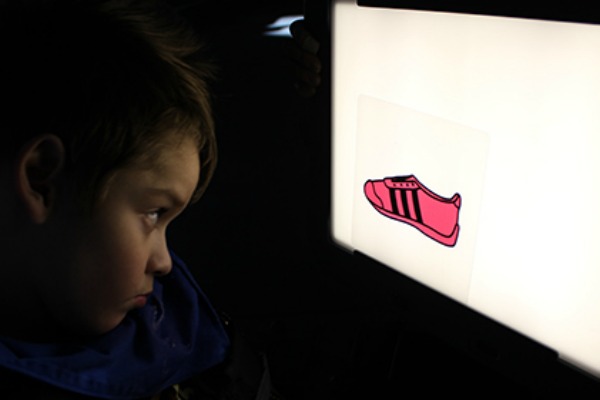
Guiding Principles
- No child (with CVI and CCN) should be denied access to seeing, learning, language, literacy, communication and full participation.
- Vision, learning, mobility, language, literacy, communication, participation are developmentally intertwined.
- If you can’t talk and have CVI, incidental learning and joint attention are limited. When vision improves, other areas can be positively impacted.
- Improvement in functional vision and other developmental domains should be expected.
- Vision, language, learning and communication goals should be integrated and addressed holistically and collaboratively by teams that include SLPs, vision specialists, teachers, OTs, PTs, physicians, family members, and others as needed.
- The quality and quantity of nonverbal and linguistic input to children with CVI helps them process visual information, as well as understand and interpret what they see and experience.
- Access to language and sufficiently large vocabularies is essential to a child’s long-term linguistic, cognitive, educational, social, emotional, and communication development and their participation and ability to function in the world.
- Children with CVI and CCN need access to assistive technologies and a variety of AAC tools and strategies, across their life span.
- Vision, language, literacy, learning, communication and participation goals must be considered concurrently, however, they are NOT always addressed simultaneously.
Adapted from Blackstone, S. & Roman-Lantzy, C. (2019). Children with CVI and Complex Communication Needs. In C. Roman-Lantzy (ed.), Cortical Visual Impairment: Advanced Principles. 58-91: Louisville, KY: APH Press.
CVI Resources for Adapting Literacy Activities
References
Blackstone, S.W. & Hunt-Berg, M. (2012). Social Networks: A Communication Inventory for Children with Complex Communication Needs and Their Communication Partners. WI: Attainment Company.
Blackstone, S.W. & Roman-Lantzy, C. (2019). Children with CVI and Complex Communication Needs, pp. 58-91. AND Roman-Lantzy, C. (2019). A path to literacy for students who have CVI, pp.37-57. In Cortical Visual Impairment: Advanced Principles (ed). Louisville, KY: APH Press
Booster, J. & McCarthy, J. (in prep). Providing AAC Supports for Individuals with CVI: A Scoping Review.
Brady, N. C., Bruce, S., Goldman, A., Erickson, K., Mineo, B., Ogletree, B. T., Paul, D., Romski, M. A., Sevcik, R., Siegel, E., Schoonover, J., Snell, M., Sylvester, L., & Wilkinson, K. (2016). Communication services and supports for individuals with severe disabilities: Guidance for assessment and intervention. American Journal on Intellectual and Developmental Disabilities, 121(2):121-38. doi: 10.1352/1944-7558-121.2.121.
Drager, K., Light, J., Curran-Speltz, J., Fallon, K., & Jeffries, L. (2003). The performance of typically developing 2 ½-year-olds on dynamic display AAC technologies with different system layouts and language organizations. Journal of Speech, Language and Hearing Research, 46, 298-312.
Light, J. & Drager, K. (2002). Improving the design of augmentative and alternative communication technologies for young children. Assistive Technology, 14, 17-32.
Drager, K., Light, J., Carlson, R., DSilva, K., Larsson, B., Pitkin, L., Stopper, G. (2004) Learning of dynamic display AAC technologies by typically developing 3-year-olds: Effect of different layouts and menu approaches. Journal of Speech Language Hearing Research, 47, 1133-1148.
Good, W.V., Jan, J.E., de ST, L., Barkovich, A.J., Groenveld, M. & Hoyt, C.S., (1999). Cortical visual impairment in children: a major review. Survey of Ophthalmology, 38, 351-64.
Jacobson L, Ek U, Fernell E, Flodmark 0, Broberger U. (1996) Visual impairment in preterm children with periventricular leukomalacia: visual, cognitive and neuropaediatric characteristics related to cerebral imaging. Developmental Medicine & Child Neurology, 88, 724-35.
Light, J., Drager, K. McCarthy, J. Mellott, S., Parrish, C., Parsons, A., Rhoads, S., Ward, M., & Welliver, M. (2004). Performance of typically developing four and five year old children with AAC systems using different language organization techniques. Augmentative and Alternative Communication, 20, 63-88.
Rogers M. (1996) Visual impairment in Liverpool: prevalence and morbidity. Archives of the Disabled Child, 74, 299-303.
Roman-Lantzy, C. (2018). Cortical Visual Impairment: An Approach to Assessment and Intervention (2nd edition). Louisville, KY: APH Press.
Roman-Lantzy, C. (2019). Cortical Visual Impairment: Advanced Principles. Louisville, KY: APH Press.
Soul, J. & Matsuba, C. (2010). Visual impairent in children due to brain damage. In G.N. Dutton, M. Bax (Eds). Causes of Damage to the Visual Brian. London, England: MacKeith Press, 20-26.
Thistle, J. & Wilkinson, KM (2015). Building evidence-based practice in AAC display design: Current practices and future directions. Augmentative and Alternative Communication, 31,124-136.
Wilkinson, K.M., Dennis, N., Webb, C., Therrien, M., Stradtman, M., Farmer, J., Leach, R., Warrenfeltz, M & Zeuner, C. (2015) Neural Activity Associated with Visual Search for Line Drawings on AAC Displays: An Exploration of the Use of fMRI, Augmentative and Alternative Communication, 31:4, 310-324, https://www.ncbi.nlm.nih.gov/pubmed/26517757


